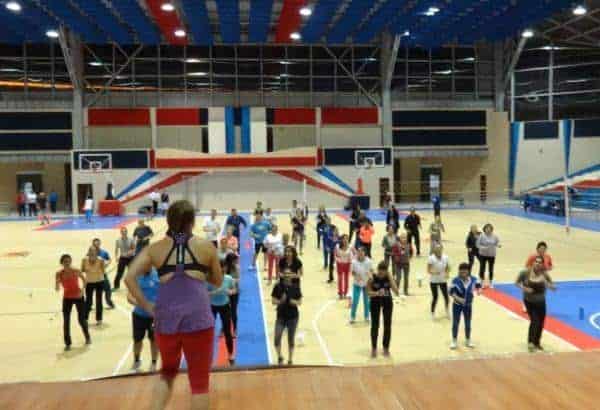Scientists from the University of Granada (UGR) have proven that a five-week exercise program based on the Zumba Fitness® discipline improves the quality of life of inactive university workers, especially the emotional aspect, and most of those improvements lasted for up to 2 months after the completion of said program.
The research, published in the Health Education Journal, was carried out on inactive university workers. This research consisted of implementing a brief exercise intervention based on the famous fitness and wellness programs Zumba Fitness®, with the aim of studying its impact on the participants’ quality of life, both in the short and medium-term.
Currently, working days in public university consist of an 8-hour schedule with predominantly sedentary tasks, thus increasing the total daily sedentary time and, therefore, constituting a potential risk factor for the health of university workers.
In this sense, it is necessary to develop interventions for the improvement of health, the promotion of healthy life habits and the quality of life in general through innovative and attractive exercise programs in that labor sector.
Quality of life is a broad concept comprising various aspects of our life. More specifically, it is divided into 8 important dimensions: social, emotional, physical state, physical pain, physical functioning, vitality, mental health and general health.
UGR researchers Yaira Barranco Ruiz and Emilio Villa González led this pilot study for five weeks along with a team of international researchers from the National University of Chimborazo (Ecuador).
The physical exercise program was carried out three days a week at the end of the workday, through one-hour classes taught by a certified ZIN Zumba Fitness Instructor and Graduate in Physical Activity and Sports Science.
This experiment caused significant improvements in most quality of life dimensions. Moreover, even two months after the intervention ended, most of the dimensions continued to maintain levels above those recorded at the beginning of the program.
Moreover, according to Barranco and Villa, “it is interesting to note that the emotional dimension, which was the one with the lowest values at the beginning, was the one with the highest values at the end of the exercise program and, therefore, the one that experienced the greatest improvement”.
The researchers of this pilot study have carried out a new, larger study, with an intervention of 16 weeks (corresponding to an academic semester), where new and diverse variables related to the health of the participants have been analyzed. Said variables include health-related physical condition, body composition, metabolic panel and nutritional habits.
The preliminary results of this study have been presented at the emblematic international congress of the renowned American College of Sports Medicine: the 63th ACSM’s Annual Meeting, 2016 (Boston, Massachusetts, USA) and the 64th ACSM’s Annual Meeting, 2017 (Denver, Colorado, USA).


